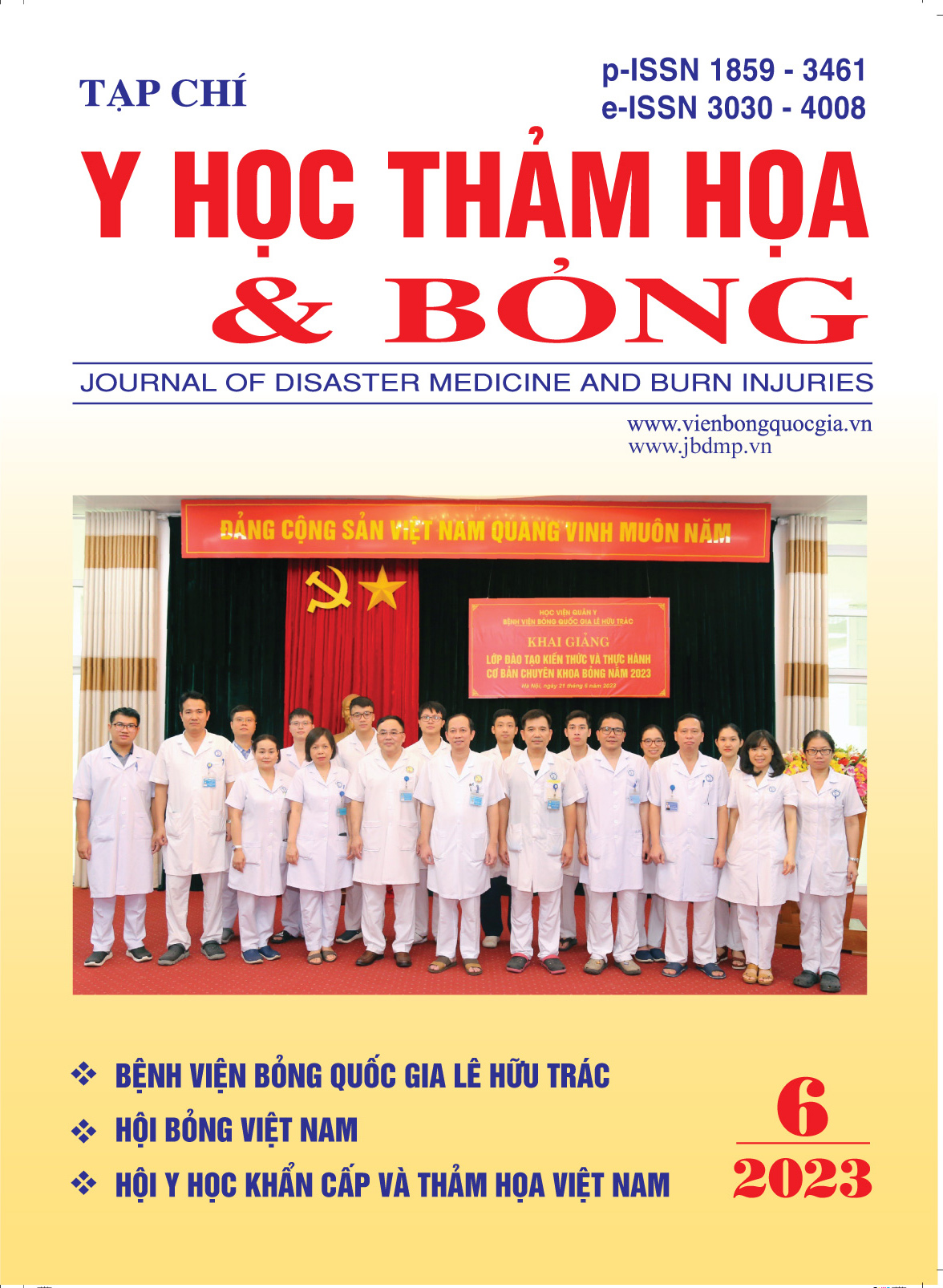Vitiligo and surgical treatment
Nội dung chính của bài viết
Tóm tắt
Objective: Initial comments on the effectiveness of surgical treatment of vitiligo
Research subjects and methods: A prospective study on 12 cases of vitiligo that were successfully treated with autologous pigment cell transplant surgery. Research period from September 2018 to October 2022 at the Center for Plastic Surgery, Surgery & Regeneration - Le Huu Trac National Burn Hospital
Results: 12 patients with an average age of 29, with vitiligo in several locations on the body, received pigment-containing cell transplant surgery. The graft adheres well, ensuring good coverage and assimilating the color of the vitiligo skin area with the surrounding healthy skin after about 12 months.
Conclusion: Pigment graft surgery is one of the effective methods of treating vitiligo and can be applied to large areas of the diseased skin.
Chi tiết bài viết
Từ khóa
Vitiligo, pigment grafting
Tài liệu tham khảo
2. Mulekar SV, Isedeh P. Surgical interventions for vitiligo: an evidence-based review. Br J Dermatol. 2013. (Suppl 3); 169:57-66.
3. Felsten LM, Alikhan A, Petronic-Rosic V. Vitiligo: A comprehensive overview part II: treatment options and approach to treatment. J Am Acad Dermatol. 2011; 65:493–514. 4. Huggins RH, Henderson MD, Mulekar SV, Ozog DM, Kerr HA, Jabobsen G, Lim HW, Hamzavi IH. Melanocyte-keratinocyte transplantation procedure in the treatment of vitiligo: the experience of an academic medical center in the United States. J Am Acad Dermatol. 2012; 66:785-93.
4. Bassiouny D, Esmat S. Autologous non-cultured melanocyte-keratinocyte transplantation in the treatment of vitiligo: patient selection and perspectives. Clin Cosmet Investig Dermatol. 2018; 11:521-40.
5. Van Geel N, Wallaeys E, Goh BK, De Mil M, Lambert J. Long-term results of noncultured epidermal cellular grafting in vitiligo, halo naevi, piebaldism and naevus depigmentosus. Br J Dermatol. 2010; 163:1186–93.
6. Gauthier Y, Surleve-Bazeille JE. Autologous grafting with noncultured melanocytes: a simplified method for treatment of depigmented lesions. J Am Acad Dermatol. 1992; 26:191–94.
7. Zhang DM, Hong WS, Fu LF, Wei XD, Xu AE. A randomized controlled study of the effects of different modalities of narrow-band ultraviolet B therapy on the outcome of cultured autologous melanocytes transplantation in treating vitiligo. Dermatol Surg. 2014; 40:420–26.
8. Mulekar SV. Long-term follow-up study of 142 patients with vitiligo vulgaris treated by autologous, non-cultured melanocyte-keratinocyte cell transplantation. Int J Dermatol. 2005; 44:841–45.
9. Pandya V, Parmar KS, Shah BJ, Bilimoria FE. A study of autologous melanocyte transfer in treatment of stable vitiligo. Indian J Dermatol Venereol Leprol. 2005; 71:393-97.
10. Olsson MJ, Juhlin L. Long-term follow-up of leucoderma patients treated with transplants of autologous cultured melanocytes, ultrathin epidermal sheets and basal cell layer suspension. Br J Dermatol. 2002; 147:893-904.
11. C Cortelazzi, G Pellacani, E Raposio, S Di Nuzzo. Vitiligo management: Combination of surgical treatment and phototherapy under reflectance confocal microscopy monitoring. Eur Rev Med Pharmacol Sci. 2020 Jul;24(13):7366-7371. DOI: 10.26355/eurrev_202007_21904.


